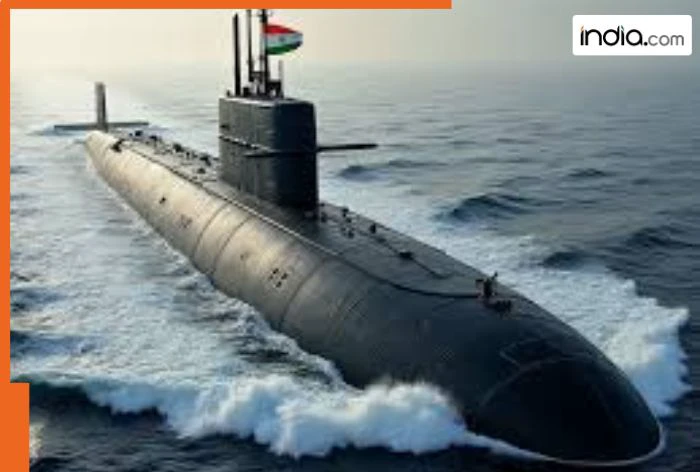Following recent wars and international disputes, India is also developing rapidly in modern warfare. With improvements in indigenous defense technologies to advanced naval and air capabilities, India is swiftly changing its military profile to match emerging threats and strategic challenges.
An example is the nuclear attack submarines development, under Project-77.
Project 77 is an ambitious project that strives to develop indigenous nuclear-powered attack submarines (SSNs) for the Indian Navy. Recently, Project-77 has gained significant traction, and approval was recently secured for the development of two submarines. Under Project-77, India aspires to design six of these submarines. The submarines will be designed to remain submerged for long periods and move at faster speeds compared to traditional submarines, dramatically increasing the Navy’s capability in terms of maritime security.
The project is heavily reliant on major contributors like Larsen & Toubro (L&T), the Defence Research and Development Organisation (DRDO), and the Shipbuilding Centre in Visakhapatnam for indigenous project development and the magnitude of resources they bring forth. The submarines are projected to carry an enhanced version of the BrahMos missile, and future hypersonic systems are still under development by DRDO, making these submarines very valuable to India in terms of naval capability.
This project is worrying for both China and Pakistan. The SSN submarines under Project-77 are going to be a huge enhancement to India’s maritime capability. With China continuously expanding its naval footprint in the Indo-Pacific region, India requires strong undersea capabilities to offset China’s growing ambitions. The SSNs being developed under Project-77 will provide difficult challenges to the Chinese Navy. The submarines will have the capability of being submerged for long periods of time, quietly following Chinese warships and submarines and providing India with an intelligence and deterrence advantage in oceans surrounding India.
With advanced variants of the BrahMos missile and future hypersonic capabilities, these submarines will be able to strike targets in the 1,500-to-2,000-kilometer range. This extended strike capability will allow the Indian Navy to hit high-value targets from a safe distance, outside the area of enemy air defense and area anti-submarine systems. This capability will allow deep-strike missions without direct risk to the submarines, which will put considerable pressure on China’s maritime strategy and monitoring network.
At present, Pakistan has no operational nuclear-powered submarines. Pakistan’s navy currently uses conventional submarines and surface vessels for various operations, while India’s SSNs that will be provided under Project-77 will have an important strategic advantage over Pakistan. The Indian SSN-class submarines will create a constant threat to the Pakistani Navy due to their speed, stealth, and missile capability. Their speed and reliance on stealth and advanced technology enable them to remain concealed from the Pakistan Navy for long periods of time, making them almost impossible to track, counter, or deter in the maritime domain.
The Indian government is developing nuclear-powered attack submarines. This ambitious plan is being driven by three major players; Larsen & Toubro (L&T), the Defence Research and Development Organisation (DRDO) and the Shipbuilding Centre at Visakhapatnam. The submarines will undertake offensive missions striking the enemy vessels, and long-duration missions for surveillance. The submarines will be designed to have BrahMos missiles, and in the not too distant future hypersonic weapons. What is a Nuclear-Powered Attack Submarine (SSN)? A nuclear-powered attack submarine generates motive power from nuclear energy, which means it is under extremely long submergence times compared to conventional submarines. With nuclear engines too, SSNs are much faster than conventionally-powered submarines, and India intends to procure 6 SSNs under Project-77. Missile Capability The submarines will be capable of launching advanced variants of the BrahMos missile, as well as hypersonic missiles being developed by DRDO which can have a strike range of 1,500-2,000 kilometers which means the submarine can strike enemy bases from safety. The submarine can remain out of reach of enemy air defence (probably operating at a target range of 200km from the base) and anti-submarine warfare (ASW), while deep-strike missions can be executed in their adversary’s seas.
